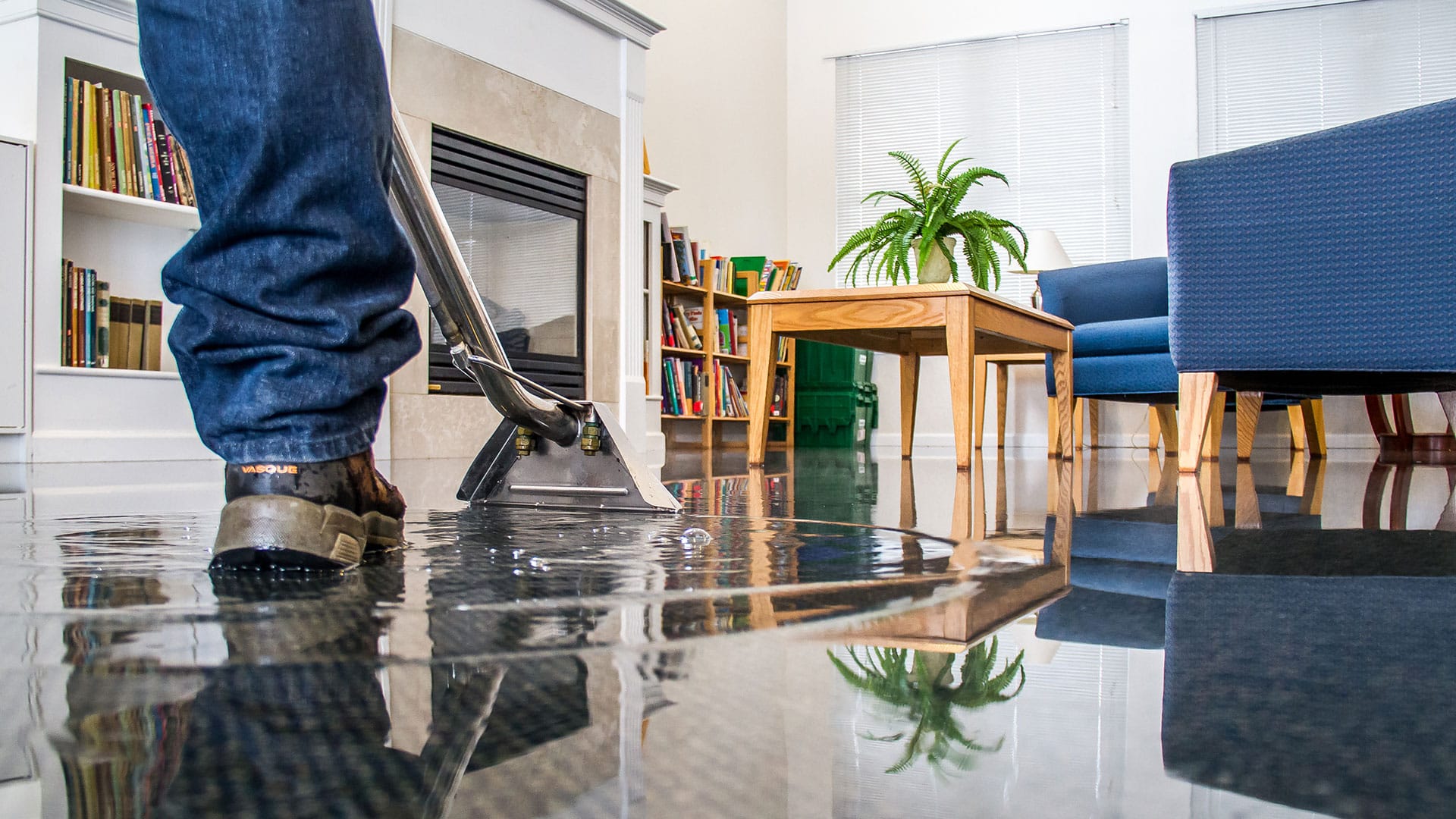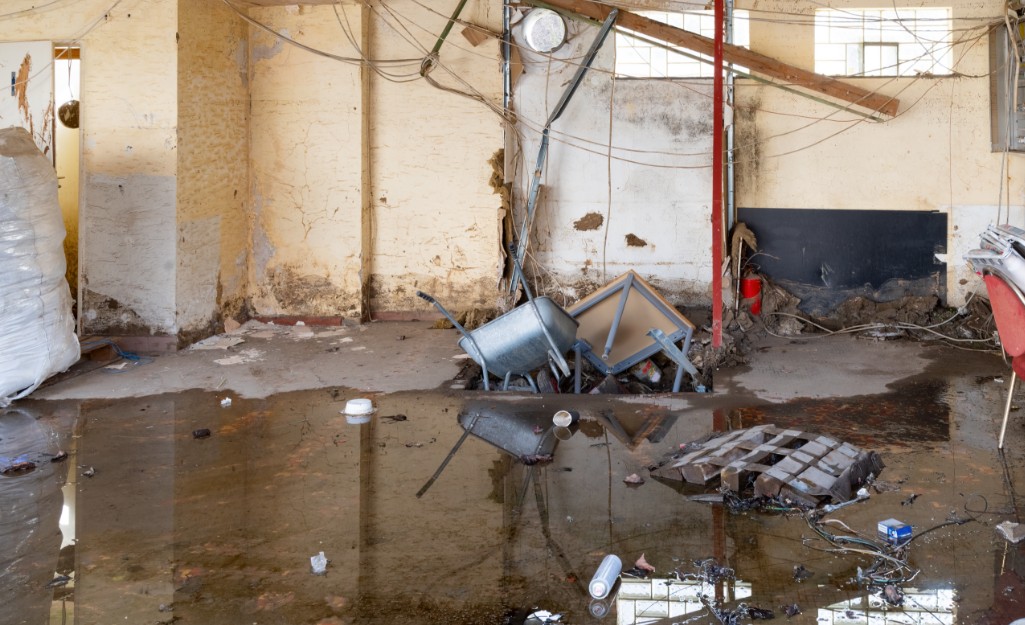Water Damage Restoration 101: Comprehending the Process and Price
Water damage can strike unexpectedly, leaving property owners in a state of confusion. Understanding the restoration procedure is necessary for reliable recuperation. From evaluating the damage to picking the appropriate provider, each step impacts the general outcome and price. Variables such as the sort of water damage and necessity additionally play a substantial role. What are the details methods utilized in restoration, and exactly how can one get ready for prospective expenses?
Sorts Of Water Damage

Initial Assessment and Inspection

Water Extraction Methods
Adhering to the first assessment, reliable water extraction methods are utilized to mitigate damage and protect against additional issues. These techniques involve using specific equipment such as completely submersible pumps and industrial-grade vacuum cleaners - Water Extraction And Drying. The selection of technique depends upon the quantity of water present and the kind of products affected. For standing water, submersible pumps are typically utilized for fast removal, while vacuum cleaners are excellent for drawing out water from rugs and upholstery. In addition, advanced techniques like water removal mats might be utilized for hard-to-reach areas - Water Damage Restoration. The goal is to eliminate as much water as possible, decreasing the possibility for mold and mildew growth and architectural damage. Trigger and efficient water extraction is important in the general water damage repair process
Drying Out and Dehumidification Process
Once the water extraction is full, the drying out and dehumidification procedure ends up being vital to restoring the affected location. This stage generally utilizes industrial-grade dehumidifiers and air movers to efficiently lower wetness levels. The dehumidifiers attract moist air, eliminating excess humidity, while air movers distribute air to accelerate evaporation. Monitoring tools is often made use of to track moisture and temperature levels, making sure suitable drying out conditions. The duration of this process can differ depending on the extent of the water damage and environmental aspects. It is vital to thoroughly completely dry all affected products, consisting of walls, floor covering, and furnishings, to prevent mold growth and structural damage. Appropriate implementation of this step is crucial for an effective reconstruction end result.
Cleansing and Disinfecting Damaged Areas
When the drying out process is total, an extensive initial analysis and evaluation of affected areas is vital to identify contamination levels. Reliable cleansing techniques and ideal items need to after that be utilized to remove debris and stains. Sanitization and sanitation techniques are crucial to ensure that dangerous virus are gotten rid of, bring back the room to a secure condition.
Preliminary Evaluation and Inspection
Before beginning any type of reconstruction efforts, a detailed first assessment and inspection of the impacted areas are essential for reliable cleansing and sanitizing. This procedure entails determining the degree of water damage, establishing the source of the water breach, and evaluating the products influenced. Assessors usually search for indicators of mold growth, structural honesty concerns, and damaged personal belongings. The evaluation additionally includes inspecting dampness levels making use of specific devices to guarantee no concealed water pockets stay, as these can cause more problems. Recording the findings is necessary for preparing the next steps in the reconstruction procedure. A comprehensive preliminary assessment allows restoration experts to devise a targeted strategy for reliable cleaning and sterilizing, inevitably reducing damage and health threats.
Cleansing Strategies and Products
Efficient cleaning and sterilizing of water-damaged locations call for a selection of methods and products tailored to the specific products affected. For permeable surface areas like drywall and carpets, extraction methods are vital to eliminate excess moisture, complied with by deep cleansing with specialized cleaning agents. Non-porous materials such as floor tile or metal can be cleaned up using commercial-grade cleaners that successfully get rid of contaminants. Vapor cleaning is an additional efficient technique, particularly for carpets and furniture, as it uses heats to remove microorganisms and mold and mildew (Flood Cleanup Services). In addition, green products are increasingly preferred for their safety and efficiency - Water Extraction And Drying. Eventually, choosing the suitable cleaning methods and products not just ensures immediate tidiness but likewise aids in avoiding further damage and carcinogen related to water invasion
Sanitization and Disinfection Techniques
When addressing water damage, correct sanitization and sanitation techniques are necessary to guarantee the safety and wellness of the afflicted setting. After first cleansing, surfaces must be treated with suitable anti-bacterials to eliminate microorganisms, mold and mildew, and germs that thrive in damp conditions. Common methods consist of making use of EPA-approved chemical anti-bacterials, which can be used through spraying or cleaning methods. Furthermore, ultraviolet (UV) light systems can effectively sterilize locations by counteracting microbes without extreme chemicals. The option of approach typically depends upon the type of materials affected and the degree of contamination. Inevitably, thorough sanitization not just recovers a secure living space but additionally aids protect against future wellness threats connected with remaining moisture and mold and mildew development.

Repairs and Restoration Options
Evaluating the damage created by water exposure is crucial for determining the ideal repair work and restoration choices. House owners might face different issues, including harmed drywall, distorted floor covering, and jeopardized architectural components. Depending upon the extent of the damage, repair services might include changing sections of drywall, installing new flooring, or enhancing architectural beam of lights. In cases of extreme damage, complete substitute of damaged products could be needed. Furthermore, professional restorers typically advise utilizing wetness meters to analyze hidden wetness levels before choosing the most effective strategy. It is very important to act promptly to stop mold and mildew growth and further deterioration. Choosing the ideal alternatives not just recovers the property but also assures lasting safety and security and capability.
Aspects Affecting Restoration Prices

The extent of water damage directly influences the reconstruction sets you back house owners can anticipate to incur. Factors such as the source of the water, the period of direct exposure, and the damaged products substantially influence rates. As website an example, tidy water damage from a busted pipeline is typically much less costly to recover contrasted to damage triggered by sewer. In addition, the level of contamination dictates the need for specialized cleansing and disposal solutions, additionally enhancing expenses. Geographical location also plays a function, as local labor prices and availability of reconstruction solutions can differ. The urgency of the reaction influences prices; quicker treatments normally lead to reduce overall costs by stopping more damage. Recognizing these variables is essential for homeowners when estimating repair prices.
The 3 main types of water damage are categorized based on contamination degrees: clean water, grey water, and black water. An extensive initial analysis and inspection are vital steps in the water damage reconstruction process. For standing water, submersible pumps are normally utilized for rapid removal, while vacuum cleaners are ideal for extracting water from rugs and furniture. The level of water damage straight influences the reconstruction costs house owners can expect to incur. Clean water damage from a broken pipe is generally much less expensive to bring back contrasted to damage triggered by sewage.